A Guide to Portable Electric Coolers

Portable coolers are not “ice chests.” That’s why they’re particularly useful for boaters. There’s no need for ice in the cooler, which can take up half the space otherwise available for cold storage.
They’re in effect portable refrigerators and that makes them good for boaters because you can go out for days or weeks without concern about replenishing ice for cooling — unless you need some for your margarita.
And even actual ice needs are covered by many models, which include a freezer compartment, just like your refrigerator at home. Ice cream afloat? Why not, so long as your battery power holds out?
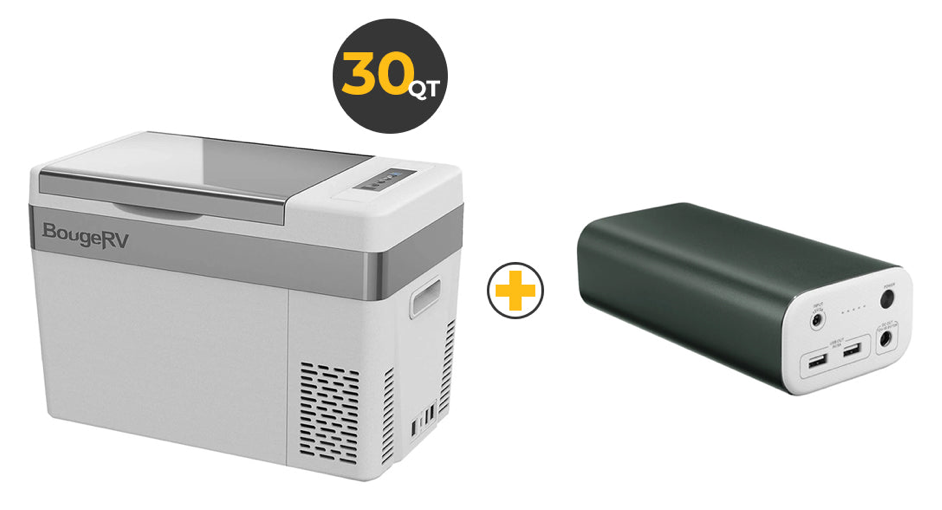
No Ice Needed
The coolers run on 12-volt power and most are plug-and-play connecting via a cigarette-lighter type plug as needed. Many also include an adapter so they can run on AC power if you have a generator or when you can connect to shore power. Some also offer light-weight portable batteries as part of the package. These batteries power the cooler and have USB connections.
A 12V refrigerator usually uses 30 to 55 Amp/hours on average per day. A typical 1100Wh portable power station lets you run a 12V portable fridge for at least a day. However, a portable fridge will consume battery power when used at high ambient temperature or without precooling, so plan accordingly.
Most quality portable coolers include a cut-off device that senses when your boat or vehicle battery is getting low and shuts off the power to the refrigerator. You won’t be stuck with a dead battery and an engine that won’t start.
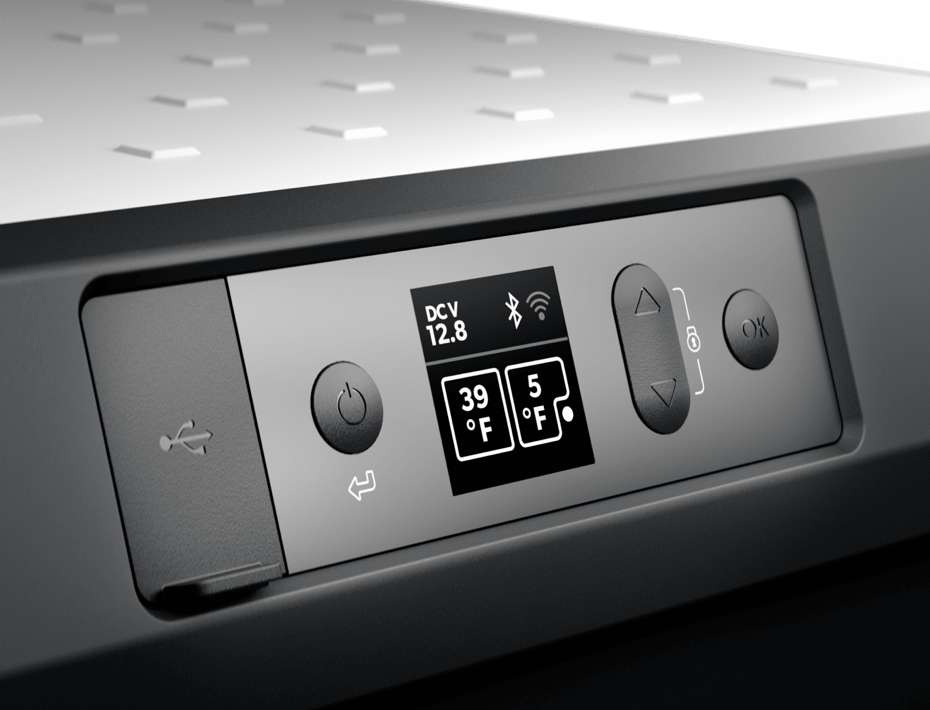
Add solar panels and your cooler may never run out of juice. (You’ll also want a dedicated battery to store the solar power when the sun is shining so it will keep your refrigerator running through the night or on rainy days.) A 100W or larger solar panel and a minimum 40Ah battery like the Dometic PLB40 will do the job for most portable refrigerator/freezers suitable for marine use.
To determine how long the battery will power a cooler check the average energy consumption per hour (Ah/h). This is the amount of energy the cooler will use in one hour for the given internal and ambient temperature. Divide your battery’s usable capacity (Ah) by the average energy consumption (Ah/h) to get the number of hours of run time.

Corrosion Resistance
Some refrigerator-freezers are made primarily for camping ashore and may have painted carbon-steel housings that will rust or corrode in a marine environment. While these are OK for use aboard if you keep them in a cabin or compartment, they won’t fare well for long-term use on an open deck, particularly around saltwater.
Those with composite exteriors, on the other hand, are impervious to salt and denting and most are water resistant to allow safe washdown without affecting the interior cooling components.
Thermo-Electric Coolers are Not Refrigerator-Freezers
Thermo-electric coolers are useful and inexpensive for casual boating, but are not true refrigerator-freezers. They can only cool to about 36 degrees below ambient temperature and have no freezer capability.
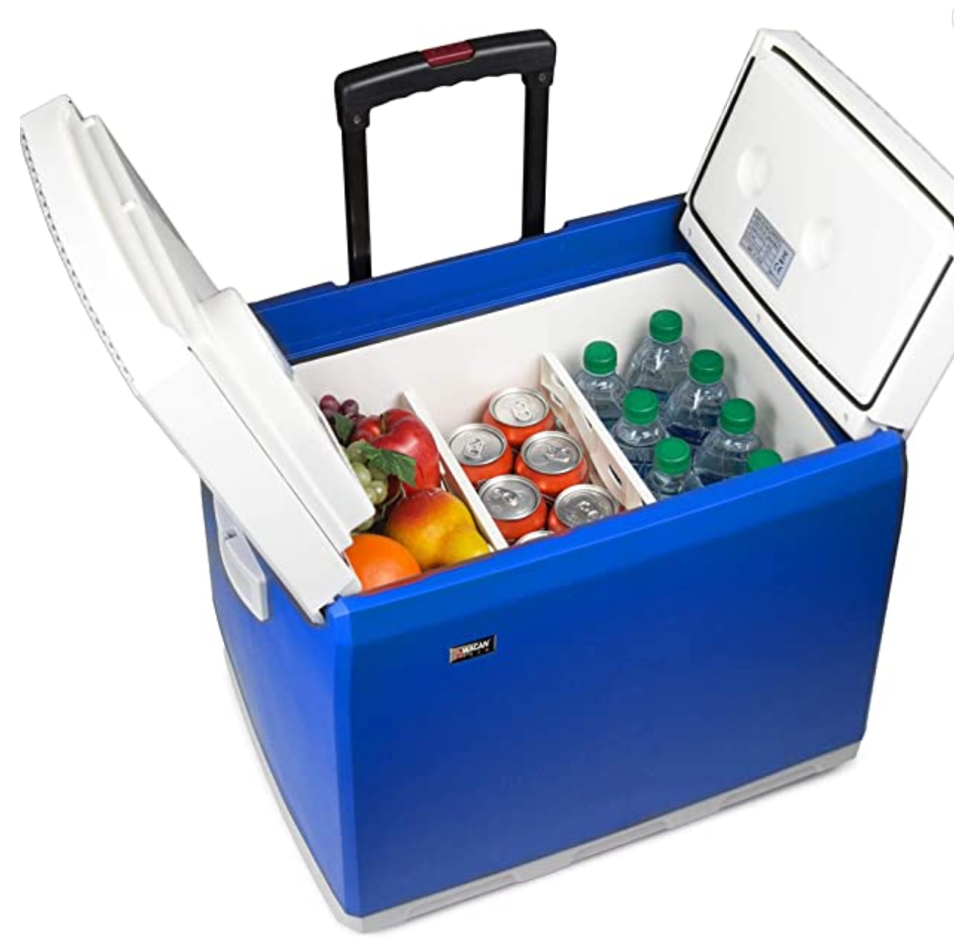
However, they are much lighter than true refrigerator-freezers — a 46-quart (43.53 L) model may weigh less than 20 lbs. (9.07 kg). The reason they’re light is that there’s no compressor as in a true refrigerator. They use a solid-state pump to move heat out of the insulated interior. There’s no refrigerant used and no compressor required. This means they have added food storage space, as well.
And they’re a lot less expensive than refrigerator-freezers — about $70 for the smaller models up to about $160 for a 46 quart (43.53 L) model.
How Refrigerator-Freezers Compare to Ice Chests
Super-durable, high-end roto-molded ice chests such as the larger Yeti, Orca and Engel models are priced at $300 to $375. This is comparable to some smaller portable refrigerators. The heavily-insulated ice chests can hold ice for up to a week.
However, they’re relatively heavy empty, at around 30 lbs. (13.61 kg) for the 56-quart (53-L) models. By the time you add much ice at all, they will be heavier than a portable refrigerator-freezer of comparable size, and will have lost 1/3 or more of their available storage volume to the ice.
How to Buy a Portable That Suits You and Your Boat
Consider the following factors when choosing the right portable refrigerator-freezer for your boating:
- Storage capacity: What are you going to put in the fridge, and how much space will it need?
- Weight: If you have to carry the unit from your vehicle to your boat loaded with food, a pair of wheels will be much appreciated. If it will stay aboard, a larger, heavier unit will be less of an issue.
- Power source: Most portable fridges come with adapters for AC and DC supply, but be you’re your batteries are up to the job of handling the added load or invest in a dedicated battery that will only supply the cooler.
- Durability/warranty: Composite, water-resistant housings are best for portables that will be used on boats, particularly around saltwater. And check the warranty — some are only 12 months, others up to three years.

Bodega makes portable refrigerator freezers from 37 to 80 quarts (35.02 to 75.71 L), priced from about $460 to $770. An optional dedicated battery will run the unit for up to 10 hours. Large wheels and a retractable handle make it easy to roll from the dock to the boat as needed. Weight is about 67 lbs. (30. 39 kg) — by the time food is added, carrying it will be a two-person chore. The units can operate on 12- or 24-volt power and include battery protection to prevent running down your starter battery. A home use adaptor, included, allows running it from AC power.

BougeRV makes refrigerator-freezers aimed at the RV market, but they’re equally useful aboard a boat. They offer 30-, 42- and 53-quart (28.39 L, 39.75 L and 50.16 L) refrigerators as well as dual-zone, dual-control refrigerator freezers in 37-, 48- and 59-quart (35.02 L, 45.42 L and 55.83 L) versions. Prices are lower than some, with the 30-quart (28.39 L) refrigerator starting at about $300, the largest refrigerator-freezer priced at $529. All the freezer models have wheels for easy transport.
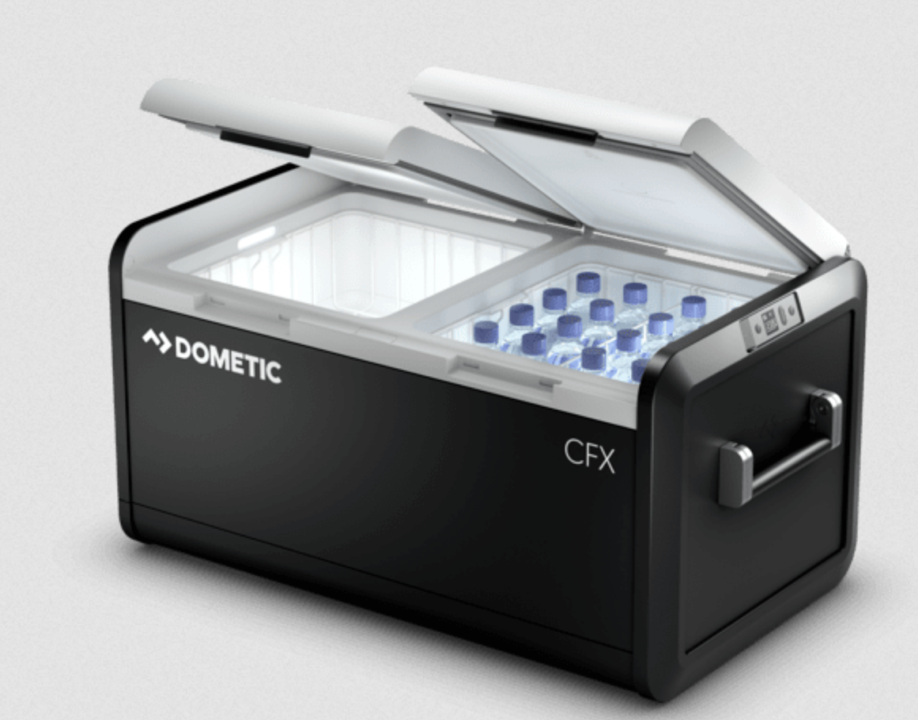
Dometic has high-end models that link to smartphones via Bluetooth for remote monitoring and temperature control. The units can run an AC power with an adapter as well as from the boat’s 12-volt system, and have separate compartments for refrigerator and freezer. The CFX-95 model weighs about 66 lbs. (29.94 kg) and capacity is about 133 12-ounce (340.2 gram) cans. Prices range from $900 to about $1550. Most units include interior lighting.

Iceco makes one of the most compact and portable 12-volt refrigerator-freezers with their 14-quart (13.25 L) model, which weighs less than 25 lbs. (11.34 kg) empty. Its largest model, the VL90ProD 90L, has a five-year warranty on the Secop compressor. The larger models have painted steel housings, which means they would not do well when exposed to salt spray, but would be fine for cabin or console. The company says the 90-quart (85.17 L) model will hold 37 bottles of wine. It lists for $129.
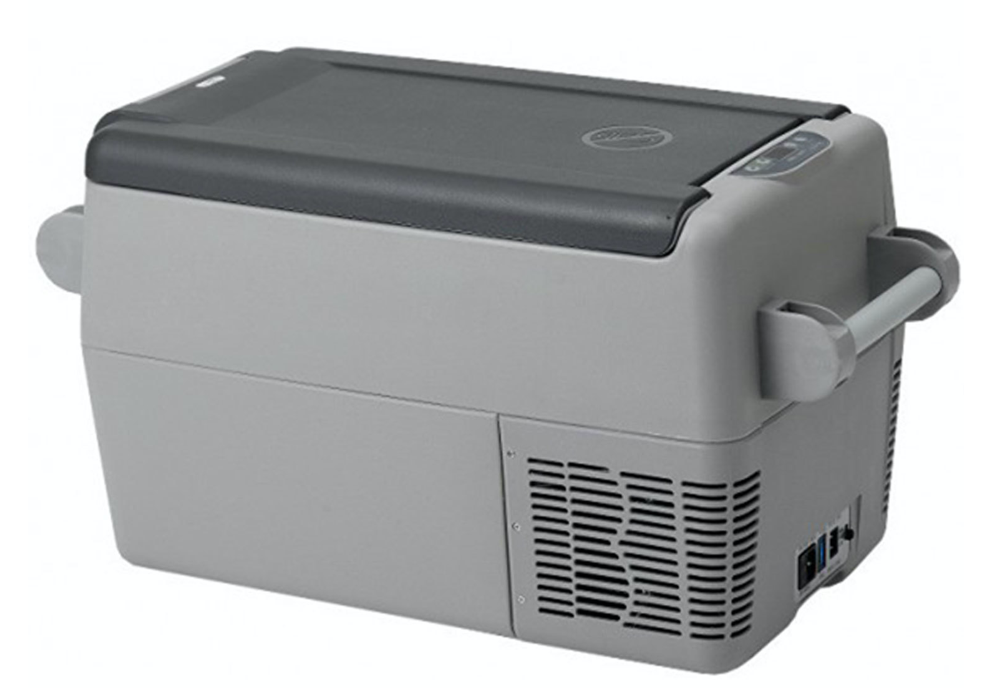
Isotherm’s portables include an energy saving function to reduce battery draw for extended use and a turbo function for the most rapid cooling. They switch automatically between 12/24 volt DC or 115-230 volt AC 115-230V supply. A battery protection switch is standard. The 1.4 cu. ft. (.04 cu. m) model is tall enough to fit 1.59-quart (1.5 liter) bottles in vertical position, according to the company. Price for the 1.4 cu. ft. size is about $1,340 from West Marine.

New Air portables include a retractable handle and large wheels to allow easy wheeling from boat to beach or dock. The 80-quart (75.71 L) model weighs just 49 lbs. (22.26 kg), making it one of the lighter portables for its size. The lid hinges are reversible to allow easy access from either side. The freezer compartment can reach temperatures as low as minus 4 degrees and all models include a lid alarm to warn if the door is not closed securely. Lift-out wire baskets permit easy organization, The 48-quart (45.42 L) model lists at about $550, the 80-quart (75.71 L) at around $800.
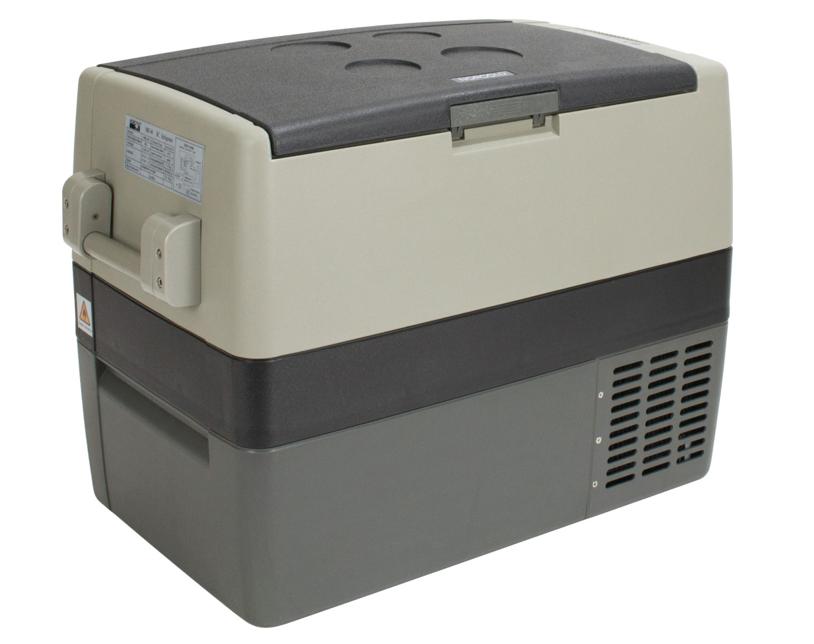
Norcold portable refrigerator freezers have composite exteriors so are suitable for use on open decks. They’re relatively light weight — the 2.1 cu. ft. (.06 cu. m) model weighs about 50 lbs. (22.68 kg), the 1.1 cubic foot model about 40 lbs. (18.14 kg). The battery-protection system shuts off the compressor if battery power gets low, and automatically turns it back on when the battery is recharged or AC power is hooked up. The 1.1 cubic foot model goes for about $70.
Wagan makes thermo-electric coolers from 5.5 quart (5.2 L) to 45-quart (42.59 L) sizes. Advantages of the coolers include light weight compared to refrigerator-freezers with compressor systems, lower noise and added usable space. Most are reverse-cycle, so can also function as food warmers. However, they can’t cool more than 36 degrees below the ambient temperature. They’re also very economically priced, from around $70 to about $170.